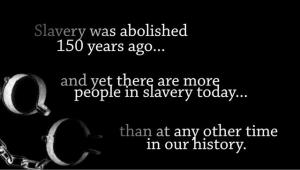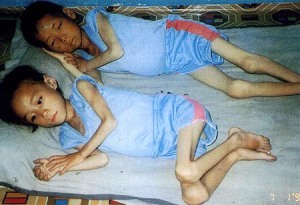Facts Everyone Should Know About Human Trafficking
written by gkim
Global Human Trafficking Facts
- Human trafficking or modern day slavery describes the act of victims being subjected to involuntary servitude, forcing victims into prostitution/sexual slavery/the sex industry, and/or compelling, urging, exploiting, supporting victims to commit sexual acts for the purpose of creating pornography, online sex chats, or stripping—all through abduction, threat, deception, peonage, coercion, debt bondage, abuse of power, forced drug usage, or violence. Human trafficking not only involves sex and labor, but people are also trafficked for organ harvesting.
- According to the US Department of Justice, there are approximately 27 million to 30 million slaves today, and approximately 79% are exploited sexually, with 18% being categorized as labor trafficking.
- According to the Global Report on Trafficking in Persons by the United Nations Office of Drugs and Crime, worldwide, almost 20% of all trafficking victims are children. However, in some parts of the world such as the African or Southeast Asian regions, children are the majority (up to 100% in parts of West Africa or the Mekong Region—Thailand, Myanmar, Vietnam, Laos, Southern China, Cambodia).
- The continent of Asia is the largest supply of human trafficking industry. According to the International Labor Organization, the human trafficking industry generates about 32 billion dollars yearly. Asia contributes 9.7 billion, and 15.5 billion come from other industrialized countries.
- According to the UN Global Compact Organization, 98% of trafficked victims who are sexually exploited are women and girls. 56% of trafficked victims who are in forced labor/economic exploitation are women and girls.
- Human Trafficking is the fastest-growing business of organized crime and the third-largest criminal enterprise in the world, set to surpass drugs and arms trafficking within the next five years.
- Globally, the average cost of one slave is $90 USD.
- According to the U.S. State Department, 600,000 to 800,000 people are trafficked across international borders every year.
- Punishment for trafficking humans is lower than for trafficking drugs, and profits for trafficking humans are higher than for trafficking drugs.
- According to United Nations Children’s Fund (UNICEF), over the past 30 years, over 30 million children have been sexually exploited through human trafficking.
- Global warming and severe natural disasters have left millions homeless and impoverished, which has created desperate people easily exploited by human traffickers.
- The average age of a trafficked victim can range from 12 to 24 years old. However there are children as young as 6 years old being trafficked.
- Prostitution is illegal in 109 countries, legal in 77 countries, and restricted (selling sex is legal but organized brothels are illegal) in 11 countries. Five countries do not have any laws for prostitution. Prostitution is illegal in almost all Asian countries where human trafficking is the most significant, but laws aren’t enforced properly. Countries that have legalized prostitution in the past have seen an influx in sex trafficking. i.e. Germany, Colombia
- According to the Federal Bureau of Investigations, the majority of sex trafficking is international, with victims taken from such places as South and Southeast Asia, the former Soviet Union, Central and South America, and other less developed areas and moved to more developed ones, including Asia, the Middle East, Western Europe, and North America.
- According to the World Health Organization and US Department of State, sex trafficking plays a major role in the spreading of AIDS. HIV/AIDS represents both a cause and consequence of trafficking for sexual exploitation. Women and children may be more vulnerable to being trafficked if their family members have contracted HIV or have died from AIDS. Women and children who have been trafficked for sexual exploitation are at greater risk of exposure to HIV/AIDS. Once trafficked, women and girls who have been infected with HIV often do not have access to health care services and are deprived of any support as they are often shunned and stigmatized by their communities.
- Nine out of ten women who escape from North Korea end up being trafficked for sex. It is a destination for trafficking of children, men, and women for sex and labor.
- A human trafficker can earn 20 times what he or she paid for a girl. Provided the girl was not physically brutalized to the point of ruining her beauty, the pimp could sell her again for a greater price because he had trained her and broken her spirit, which saves future buyers the hassle. A 2003 study in the Netherlands found that, on average, a single sex slave earned her pimp at least $250,000 a year.
- Amnesty International has reported that NATO soldiers, UN police, and Western aid workers “operated with near impunity in exploiting the victims of the sex traffickers.”
- Usually, if a sex slave is arrested, she is imprisoned while her trafficker is able to buy his way out of trouble.
- According to a congressional research service report on child sex trafficking, “It is more profitable for a trafficker to prostitute a child than to commit other crimes such as dealing in drugs.” This is because “the commodity (child) is reusable” and “technological innovation has allowed traffickers to reach a wider client base and connect more quickly with buyers.”
- Forms of labor trafficking can include domestic servitude, agricultural labor, sweatshop factory labor, janitorial, food, and service industry labor, or begging.
- Labor trafficking is happening in sugar cane fields, coffee bean plantations, cacao bean harvesting for chocolate, cotton plantations, mica mines, raw iron and metal production, garment factories, brick factories, cell phone manufacturing, and coal mining.
- According to the World Health Organization, over 10,000 organs are sold ever year, translating to one organ sold every hour.
- An illegal market has capitalized on these individuals’ desperation, and the prospects of large profits are creating unfortunate incentives, with patients willing to pay up to $200,000 for a kidney. According to the WHO report, 76 percent of organs sold were kidneys, reflecting the growing demand secondary to complications of high blood pressure and diabetes.
- Doctors and other health-care practitioners, ambulance drivers and mortuary workers are often involved in organ trafficking in addition to those involved in other human trafficking networks. The organs commonly transplanted include kidney, liver, heart, lung and pancreas.
- In countries like Pakistan, China or India, a person can sell a kidney for $5,000, while those handling the transaction make a substantial profit.
- The profit for an organ trafficker is 15 times the buying price.
- According to the UN, the impact of the illegal organ trade is 75 million dollars yearly.
(Few Facts on Sex Trafficking in Korea)
- According to South Korea’s Ministry for Gender Equality and the Korean Feminist Association, there are anywhere from 500,000 to 1 million victims who are in South Korea’s sex industry today.
- According to the Korean Institute of Criminology, one-fifth of Korean men buy sex at least four times a month, and Korean men make up the largest ethnic group to seek child prostitutes in Southeast Asian countries such as Thailand, Philippines, Cambodia, and Vietnam.
- Most trafficked victims in Korea range anywhere from seven to thirty years in age. There is a decline thereafter due to the lack of demand for older women in the sex industry.
- One majority are child runaways who have been lured into the sex industry through the internet. Most child runaways have either been sexually/physically abused or confined under intense academic pressures. The other majority are native and foreign workers who have been lured with false advertisements of decent jobs over the internet or in local newspapers. Over 90% of child trafficking in South Korea occurs over the internet. Some are voluntary workers who consider the sex industry as a decent way to earn a living.
- Different reports suggest that the sex industry accounts for anywhere from 1.4% to 3% of the annual GDP in South Korea which is roughly 14 to 30 trillion Korean won (13 to 25 billion USD) a year.
- Red light districts, massage parlors, juicy bars, image bars, room salons/roombangs (hostess bars), in-call massages, out-call massages, call girl businesses, kissing rooms, lovetels (motels used for sex), karaoke bars, and night clubs are some of the venues and types of trafficking.
- South Korea prohibits trafficking for the purpose of commercial sexual exploitation, including debt bondage, through its 2004 “Act on the Punishment of Intermediating in the Sex Trade and Associated Acts.” Although this law is in place, it has not been enforced properly.
- The Ministry of Justice runs 29 “John schools,” set up to educate male “clients” of prostitution, which are one-day seminars—in lieu of criminal punishment. NGOs report that there is only one counseling center and two shelters in the country dedicated to foreign victims of sex trafficking.





